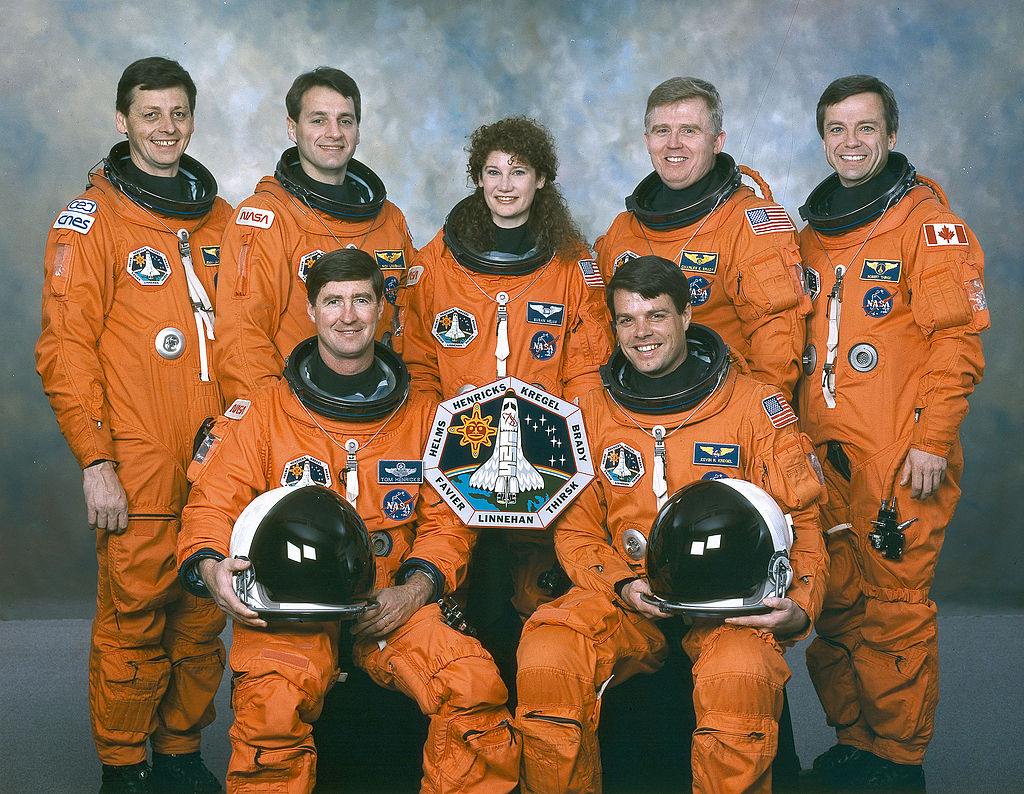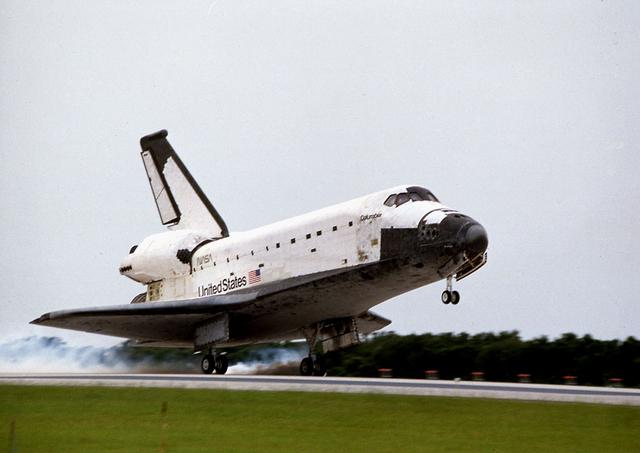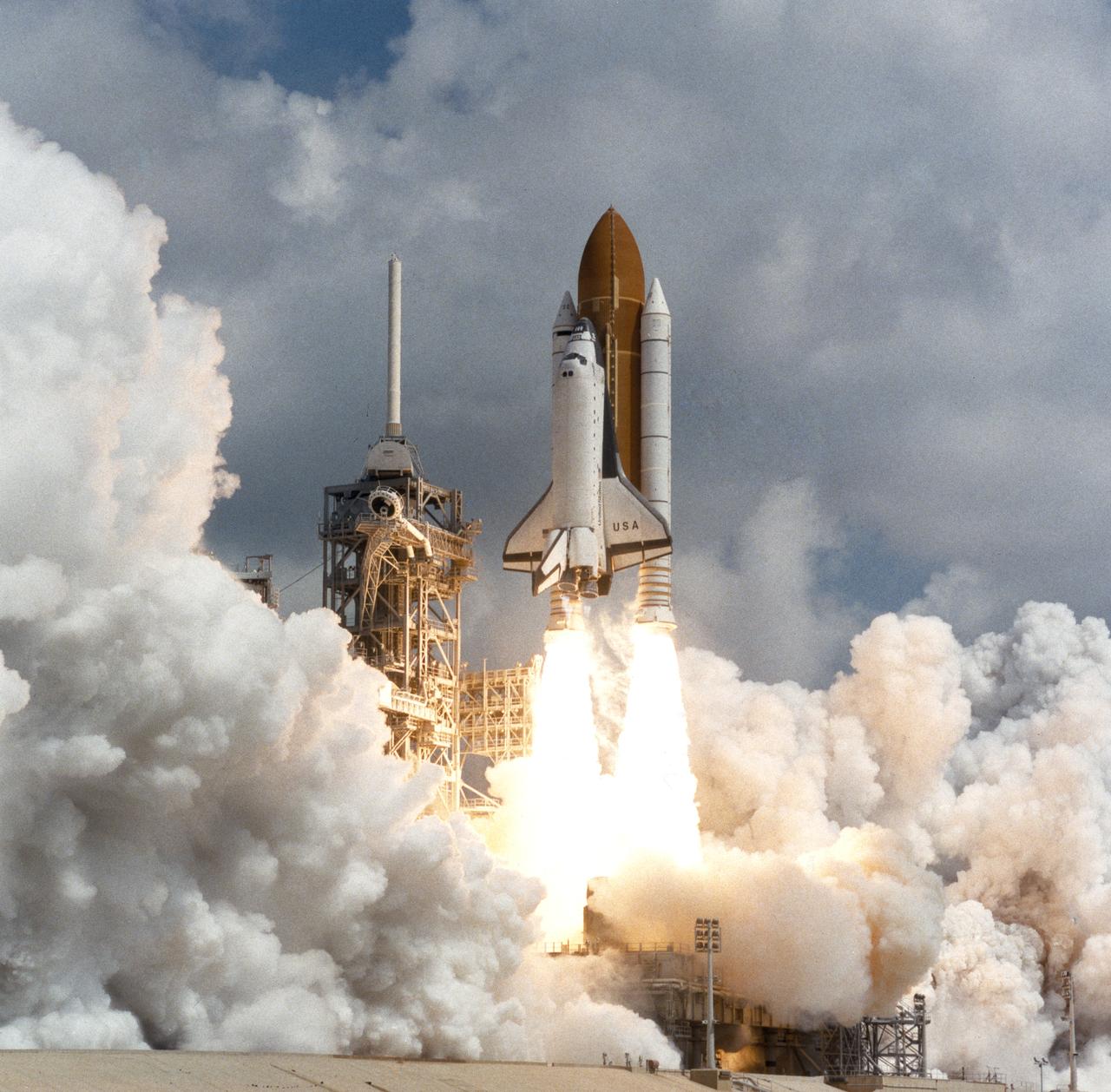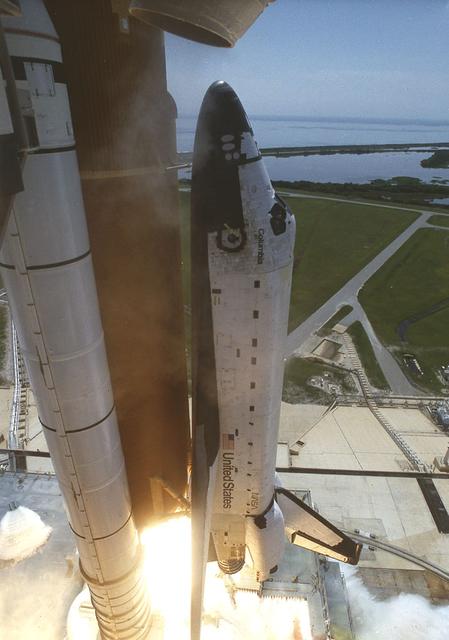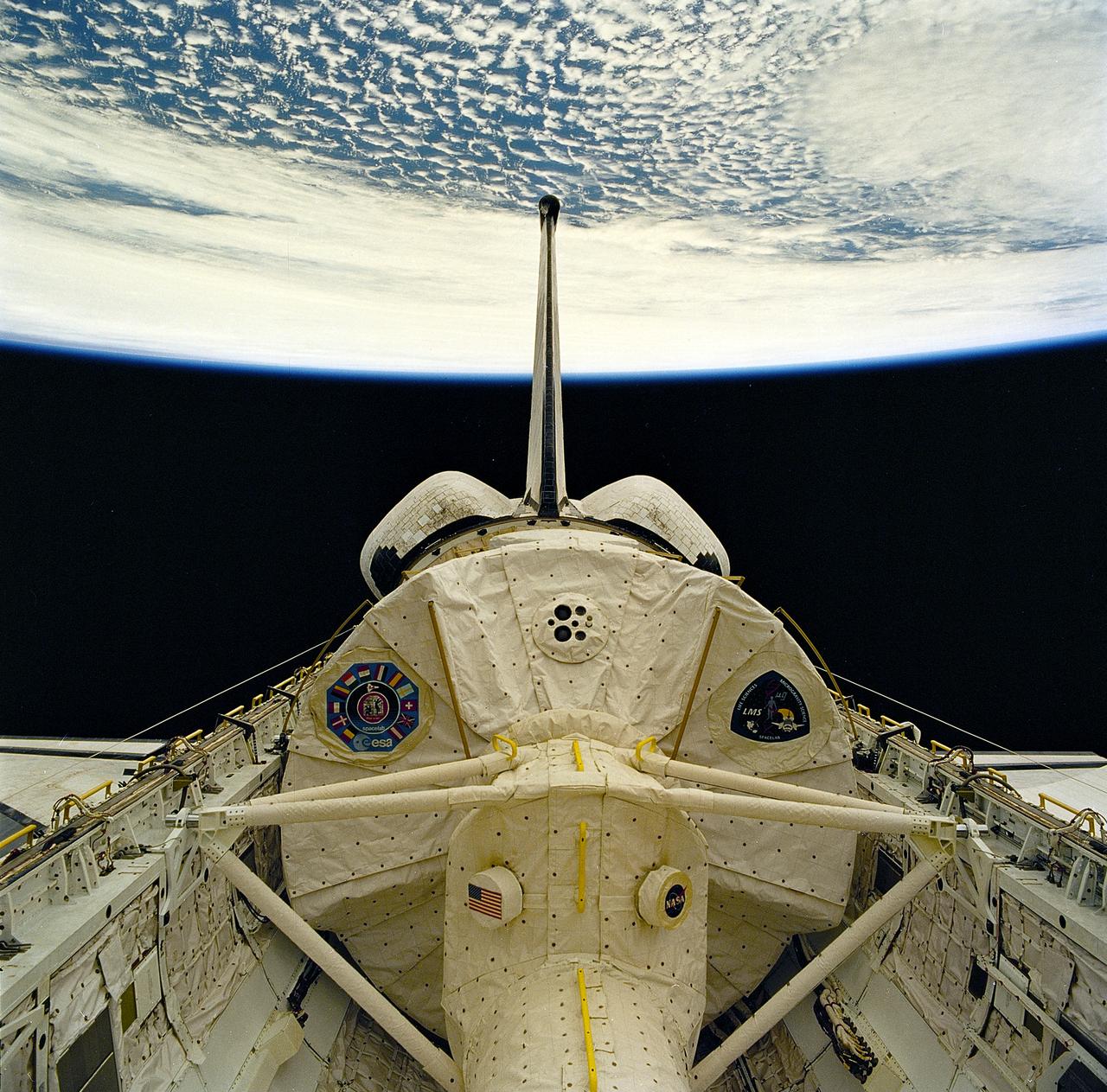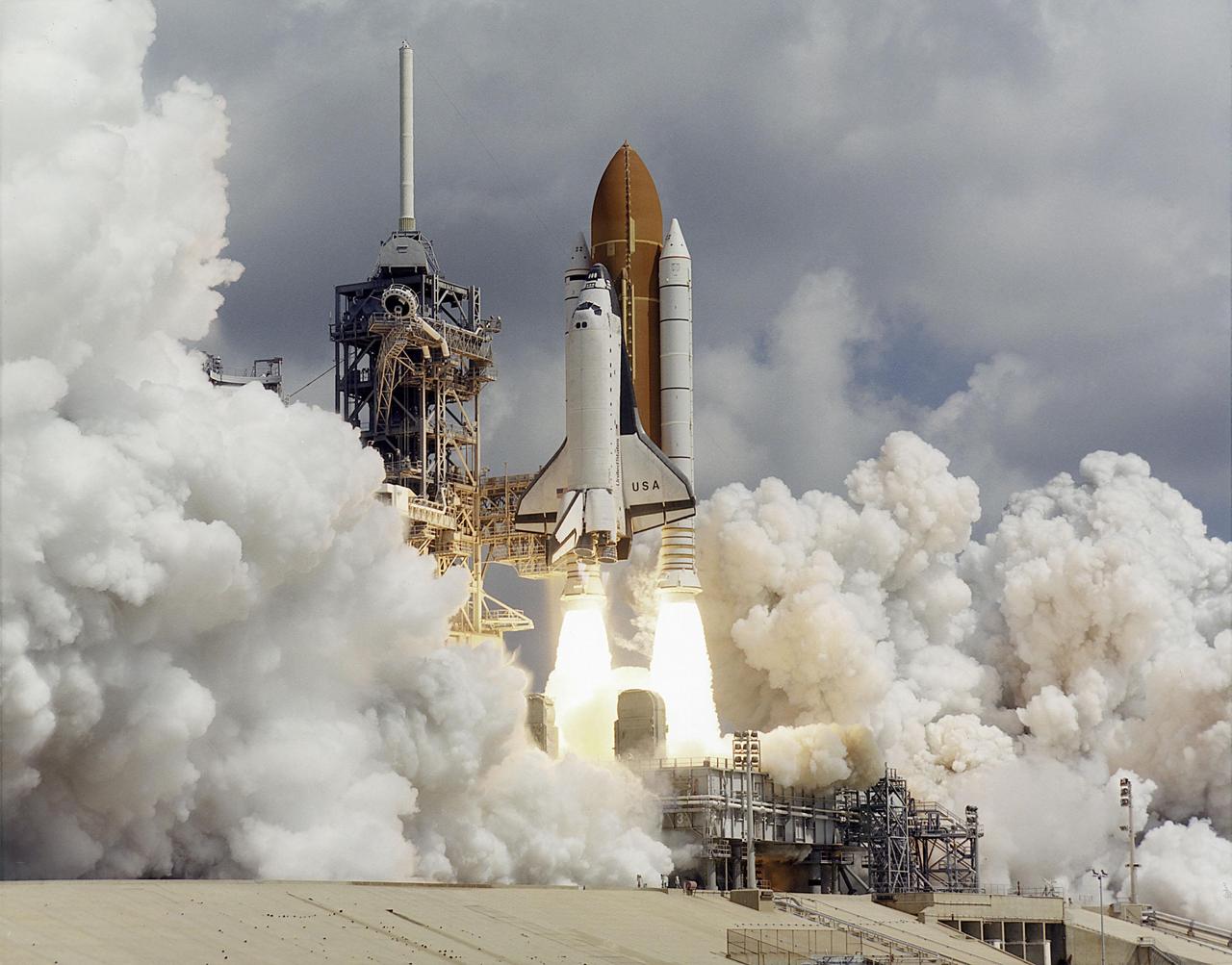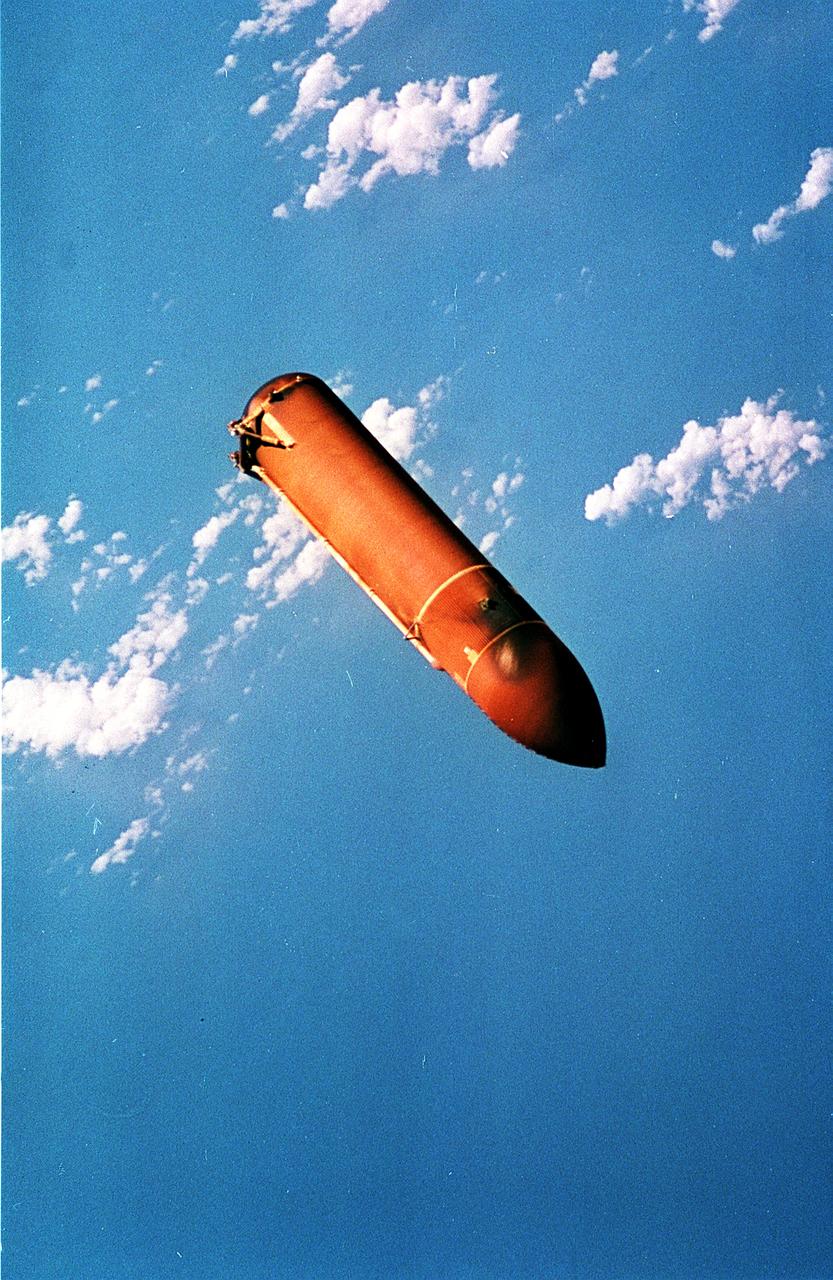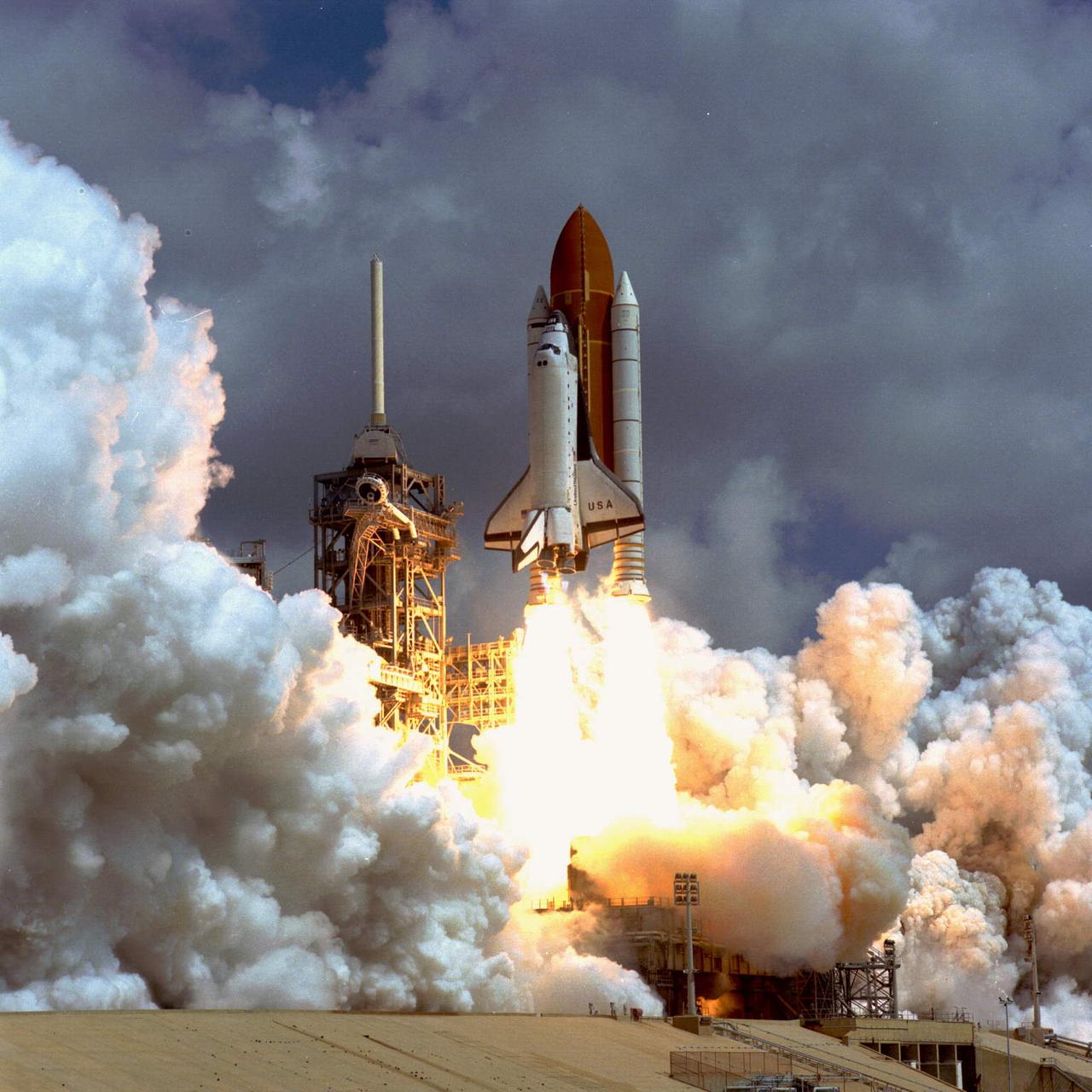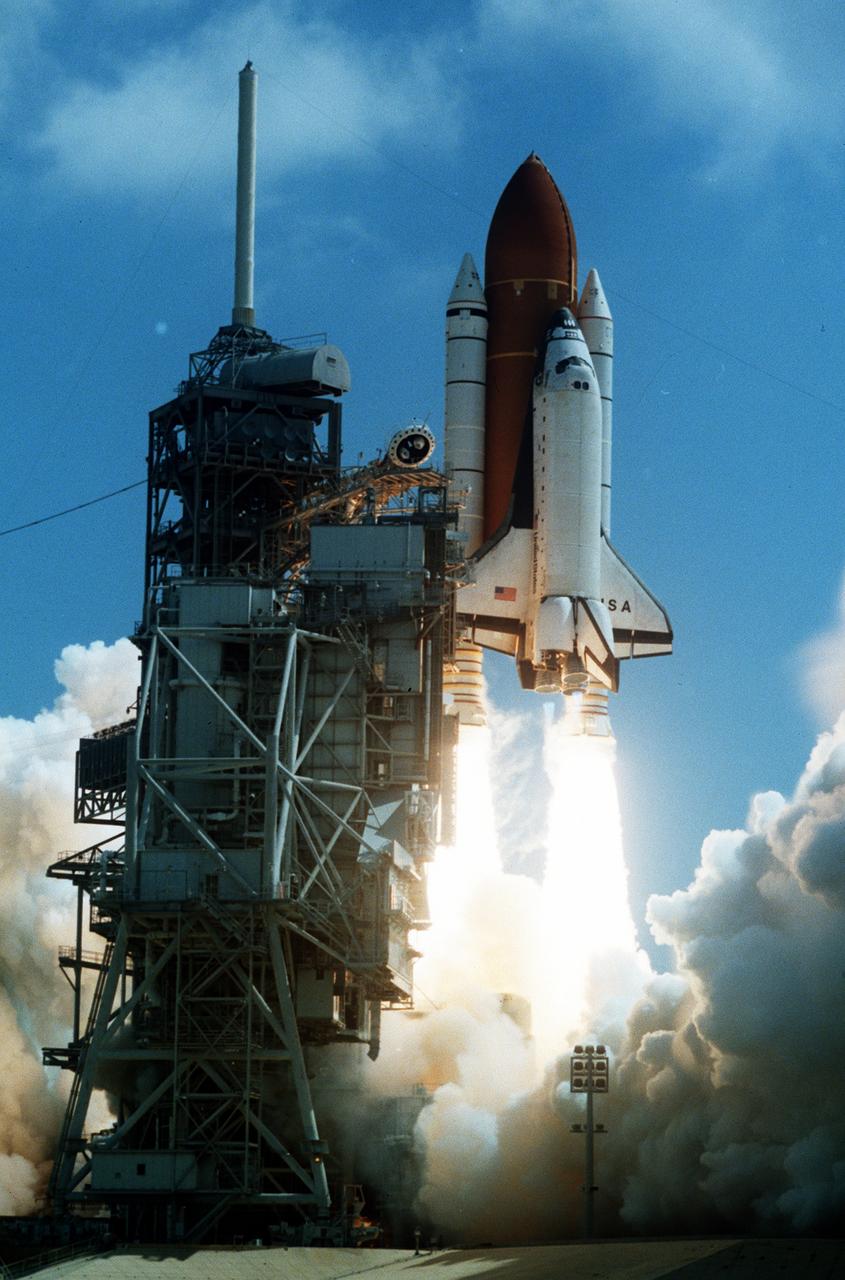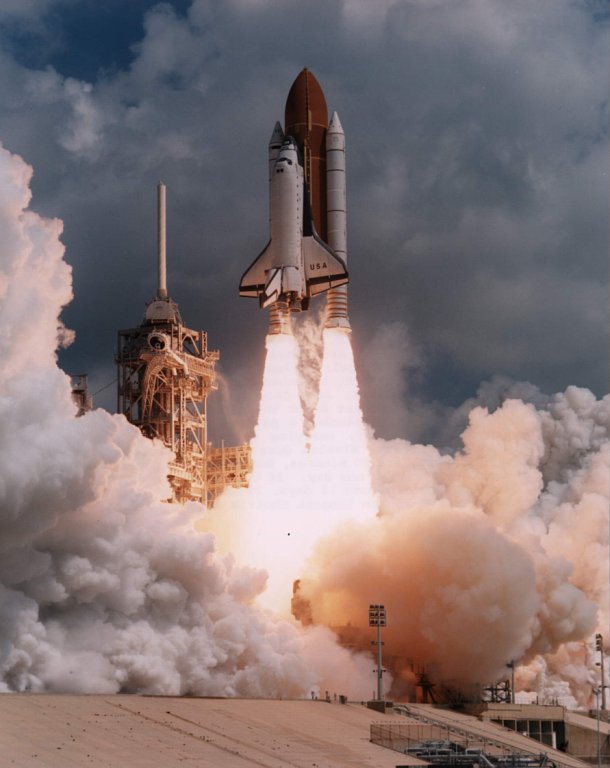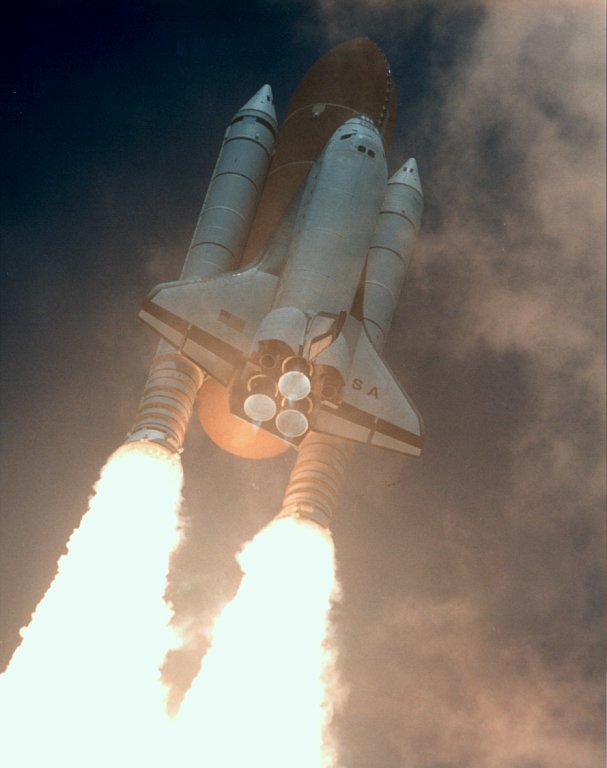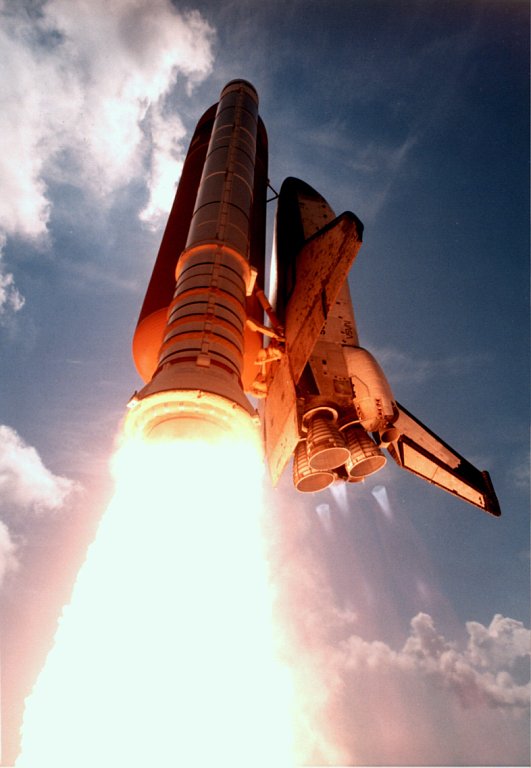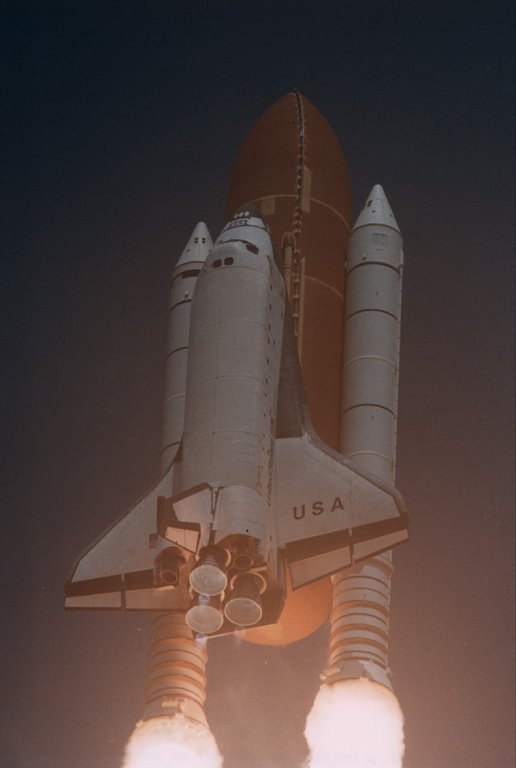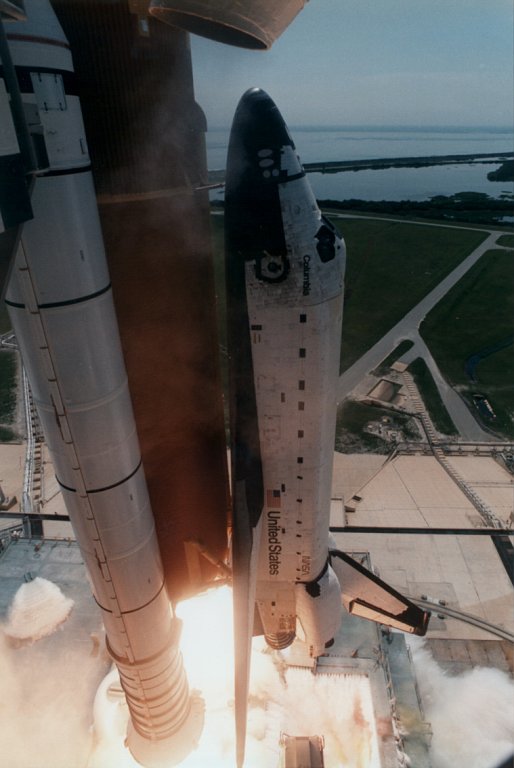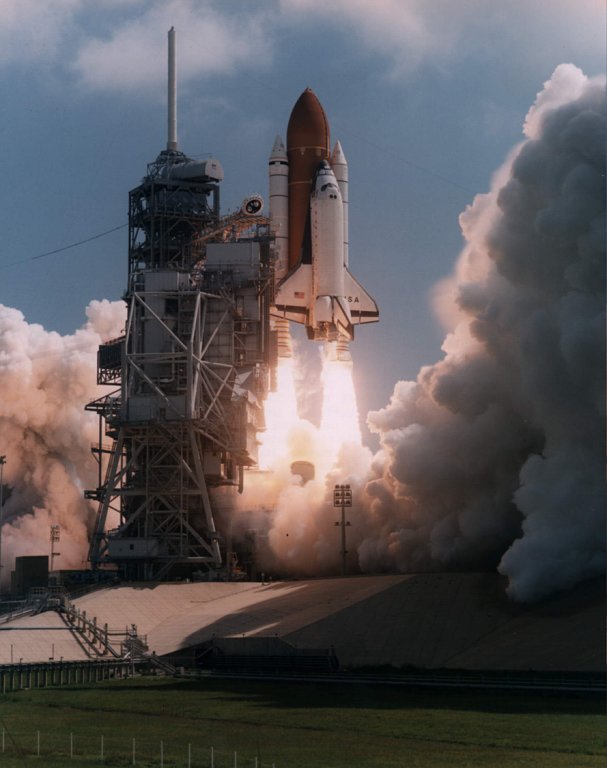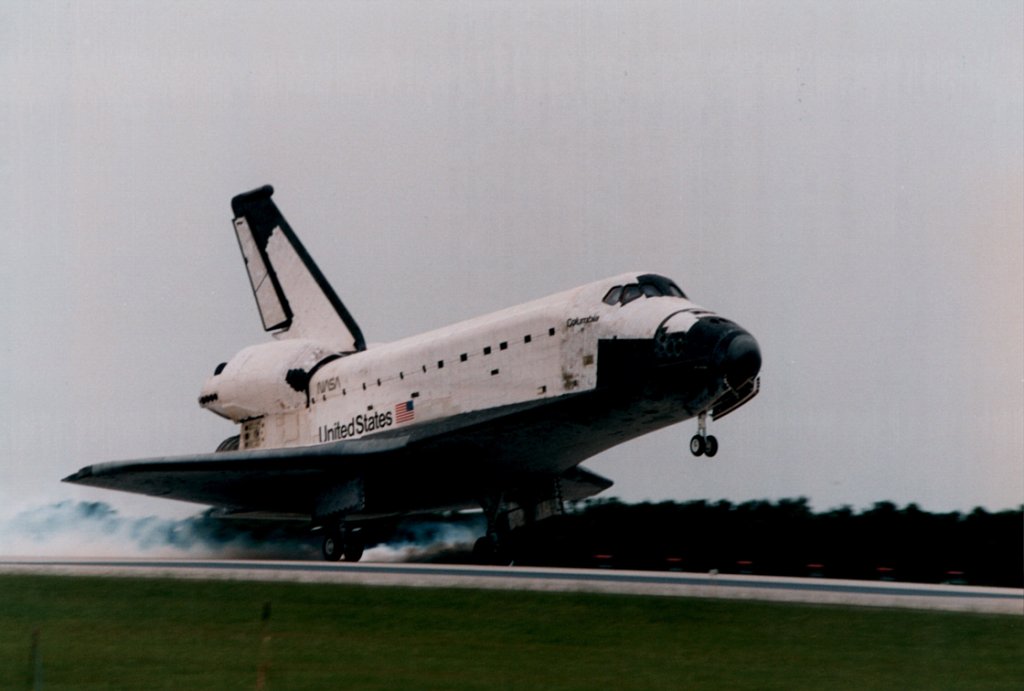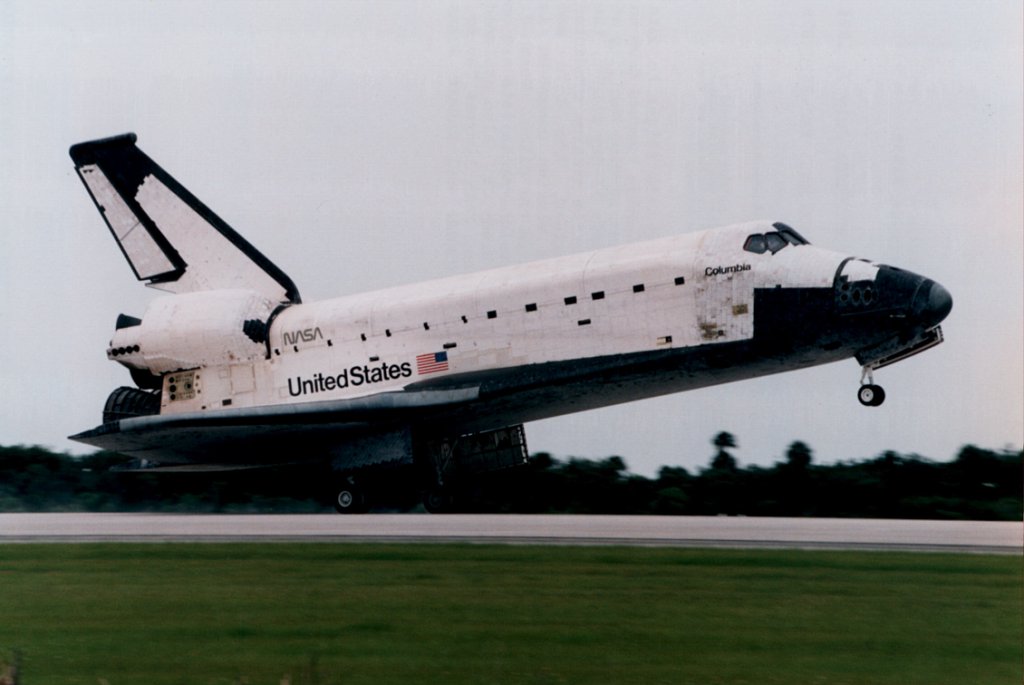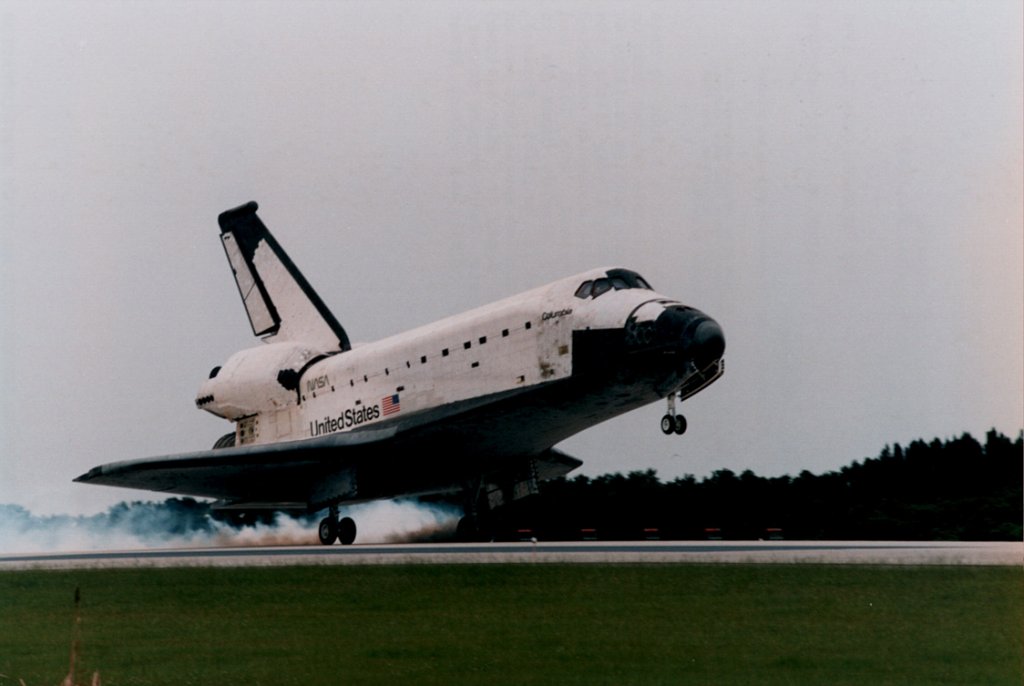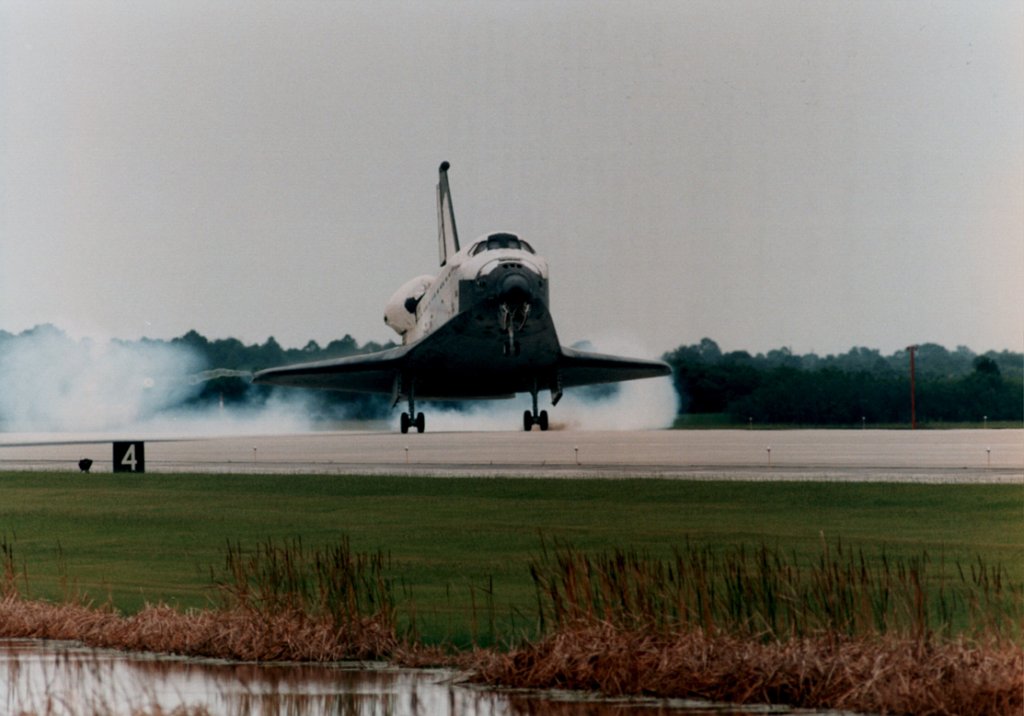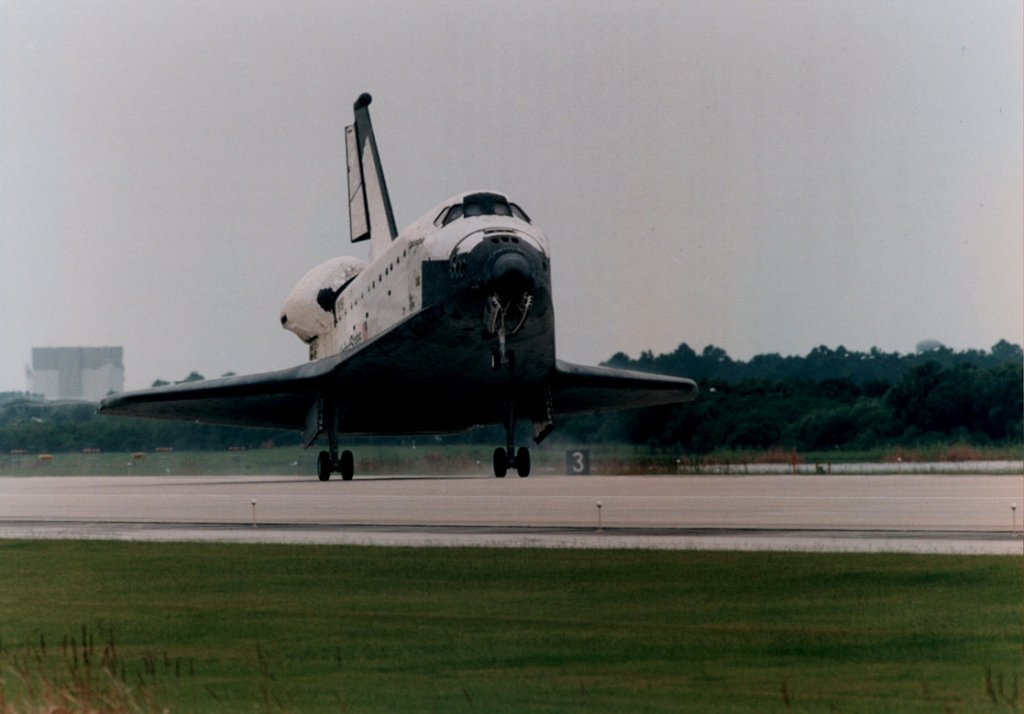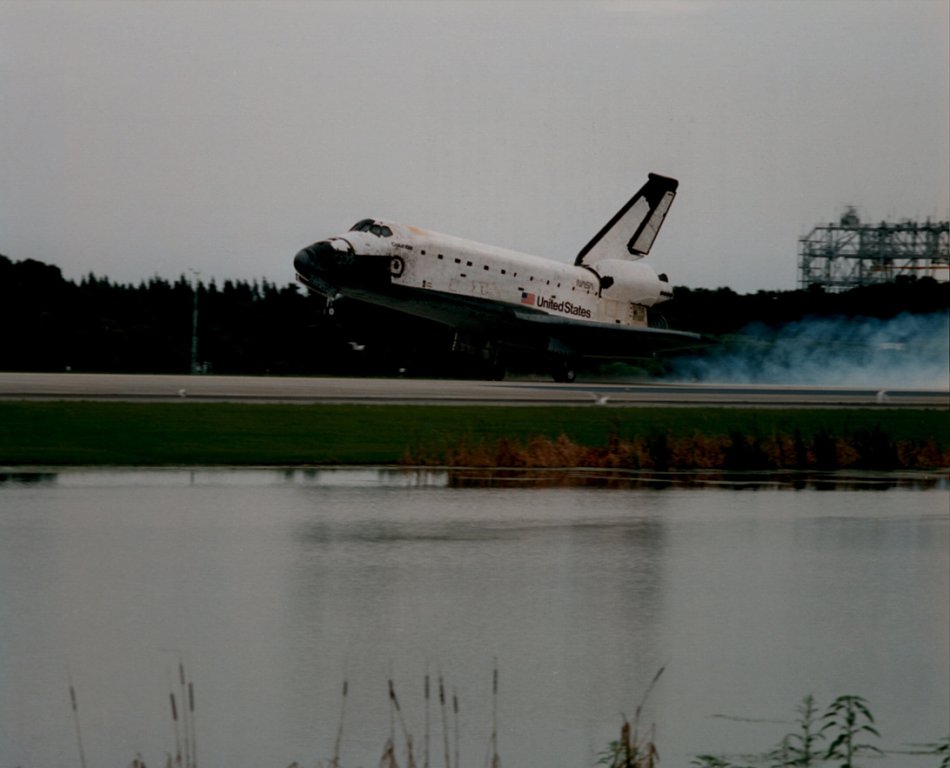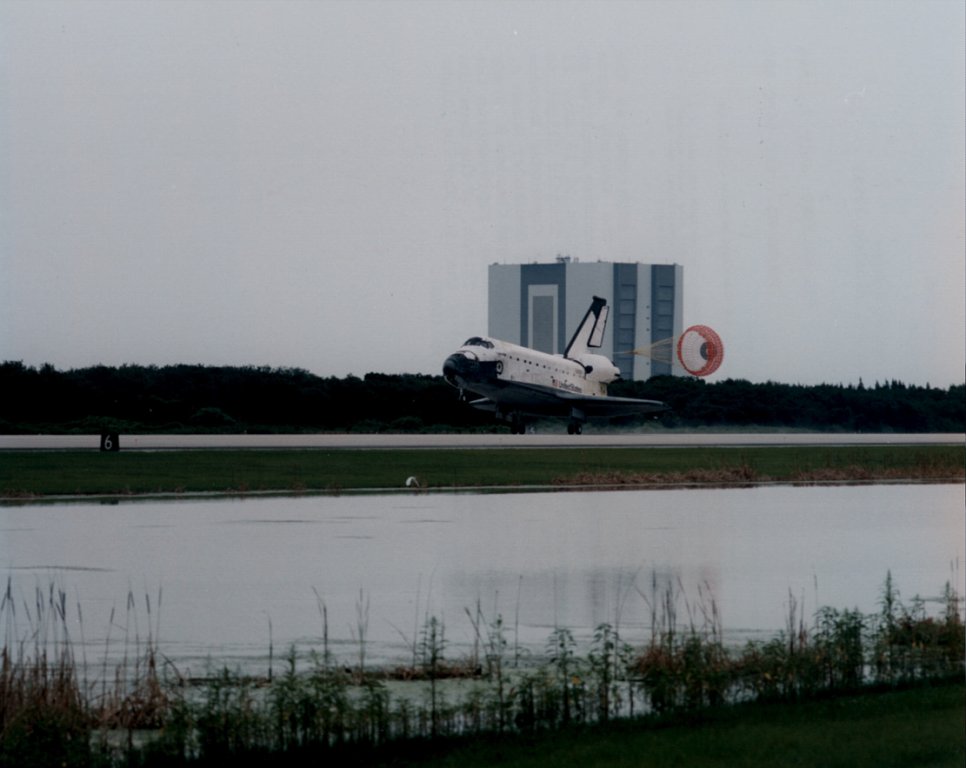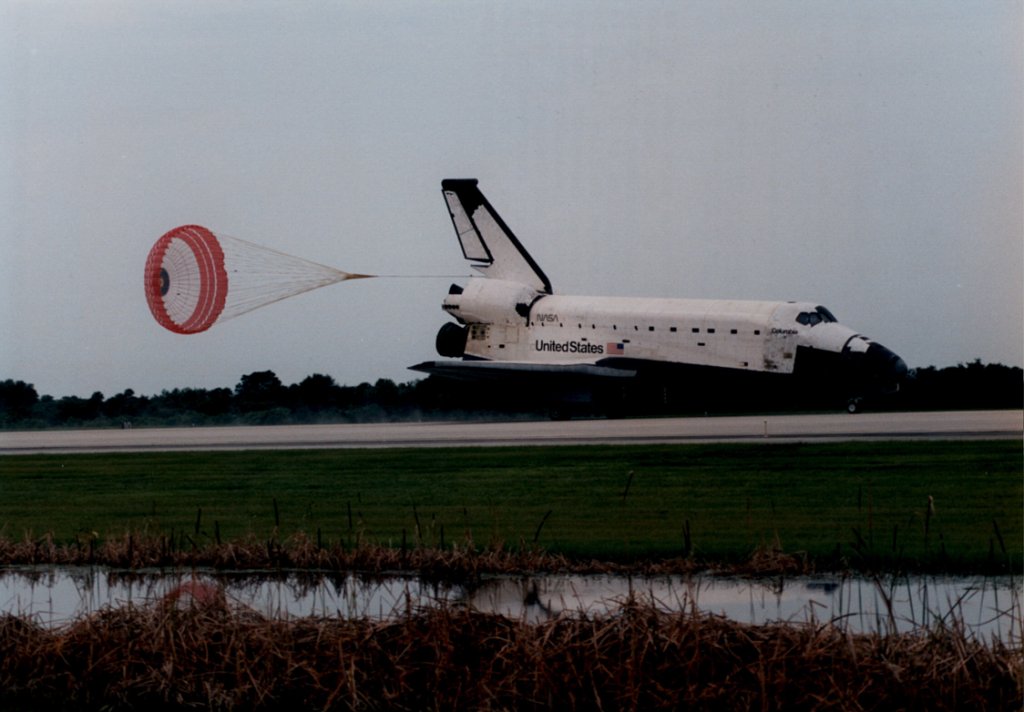STS-78 Fact Sheet
By Cliff Lethbridge

STS-78 — Columbia
78th Space Shuttle Mission
20th Flight of Columbia
Crew:
Terence T. Henricks, Commander
Kevin R. Kregel, Pilot
Susan J. Helms, Payload Commander
Richard M. Linnehan, Mission Specialist
Charles E. Brady, Jr., Mission Specialist
Jean-Jacques Favier, Payload Specialist
Robert Brent Thirsk, Payload Specialist
Orbiter Preparations:
Tow to Orbiter Processing Facility – March 9, 1996
Rollover to Vehicle Assembly Building – May 21, 1996
Rollout to Launch Pad 39B – May 30, 1996
Launch:
June 20, 1996 – 10:49:00 a.m. EDT. Liftoff occurred as scheduled with no delays. For the first time in the history of the Space Shuttle program, live video images were transmitted from the flight deck from crew ingress through main engine cutoff.
During post-launch examination of Columbia’s solid rocket boosters (SRB), it was revealed that hot gases had passed through SRB motor field joints to, but not past, the capture feature O-ring seals. Hot gases burning past the O-ring seals caused the explosion of Space Shuttle Challenger.
While the protective O-rings did their job and the crew was never in any danger, this type of hot gas burn-through caused great concerns because it was the most serious yet observed in the course of post-Challenger flight activities.
It was determined that a new, environmentally friendly adhesive and cleaning fluid being used for the first time during SRB preparations for STS-78 contributed to the hot gas burn-through. A decision was made to switch to the old fluids until further studies could be completed.
Landing:
July 7, 1996 – 8:36:45 a.m. EDT at Runway 33, Kennedy Space Center. Rollout distance was 9,339 feet. Rollout time was 45 seconds. Mission duration was 16 days, 21 hours, 47 minutes, 45 seconds. Landing occurred during the 272nd orbit.
For the first time, live video images were transmitted from a Space Shuttle during landing operations. A few hours after landing, astronauts Henricks and Kregel participated in the 1996 Olympic Torch ceremony at the Kennedy Space Center Visitors Center.
Mission Summary:
Five space agencies sponsored experiments in the Life and Microgravity Spacelab (LMS) pressurized laboratory housed in the Shuttle’s cargo bay. LMS contained more than 40 experiments in human physiology, biology, fluid physics, semiconductor and metal alloy processing, medical research and protein crystal growth.
Scientists representing ten countries in association with NASA, the European Space Agency, French Space Agency, Canadian Space Agency and Italian Space Agency participated in LMS investigations.
Data from LMS experiments was transmitted directly to investigators at four remote locations in Europe and four remote locations in the United States as a precursor to transmission methods which will be used to monitor science activities aboard the international space station.
The crew participated in some of the most detailed experiments on how space flight affects human physiology, including an unprecedented and comprehensive analysis of astronaut sleep cycles.
In addition to LMS operations, Columbia supported a test to determine if it was feasible for Space Shuttle Discovery to raise the Hubble Space Telescope (HST) to a higher orbit during upcoming mission STS-82, the second scheduled mission to service HST.
Columbia’s vernier Reaction Control System (RCS) jets were gently pulsed to boost the Shuttle’s altitude without jarring any payloads. This method was proposed to facilitate raising the altitude of HST without damaging the satellite’s solar panels.
SELECTED NASA PHOTOS FROM STS-78
